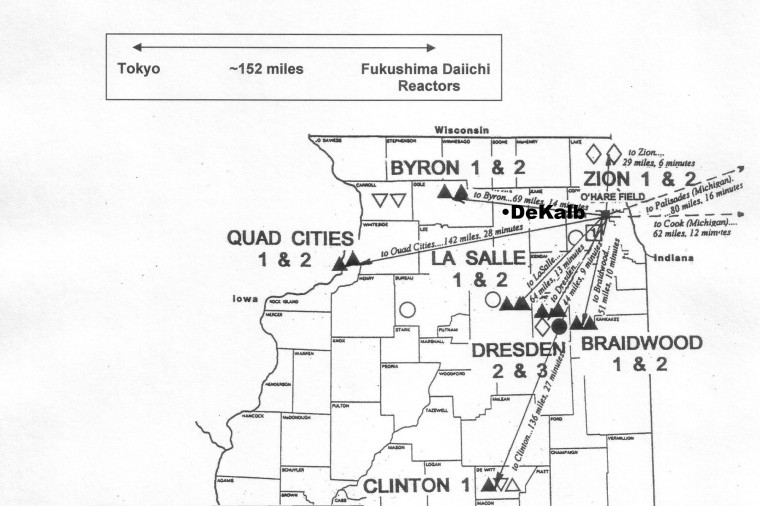Reviewing nuclear safety in Illinois
May 2, 2011
With the recent devastation at the Fukushima Daiichi nuclear power plant in Japan, there are questions about the safety of the numerous power plants in America.
Illinois has the most nuclear plants in the U.S. at 13, and because of the Japanese crisis, many concerns are being raised.
David Kraft, director of the Nuclear Energy Information Service, said Illinois’ reliance on nuclear power dates back to World War II with the Manhattan Project, which was the U.S. effort to create the atomic bomb. A significant portion of the project occurred at the University of Chicago.
“We had a utility called Commonwealth Edison [commonly known as ComEd], which is still with us today and early on was intrigued with using nuclear power to produce electricity,” Kraft said. “Back in the 1950s, part of the attraction for that was they thought the government was going to buy back the nuclear waste to make materials for nuclear weapons.”
Another problem he addressed was vulnerability to terrorist attacks on any of the plants.
“We did a calculation after 9/11 just using normal looking flight times,” Kraft said. “From O’Hare, normal fight time is six minutes to the Zion nuclear facility north of Chicago, and it’s 27 minutes away from the Quad Cities reactor, which is the same type as the one that blew up in Japan.”
Donald Zinger, NIU associate professor of electrical engineering, said in comparison to coal plants statistically, nuclear power ranks near the top.
“The overall process is pretty safe,” Zinger said. “There have been a couple of major accidents, but overall statistics are pretty good for safety.”
Zinger said an advantage to nuclear power is lack of pollution it causes.
“It doesn’t release any greenhouse gases,” Zinger said. “There’s no carbon dioxide being let out.”
Mark Fischer, NIU professor of geology and environmental geosciences, said the nuclear waste produced from power plants, such as plutonium left over from nuclear reactions, can stay radioactive for thousands of years.
“There’s no where in the world where anybody has nuclear waste from a power plant in a permanent storage facility,” Fischer said. “They only have it stored in temporary facilities and those are located on sites at the plants.”
When the tsunami struck in Japan, it took out the back-up generator system, which allows the water to heat up and go through the turbine, Zinger said. When these went out, there was no power going to the pumps to circulate the water, so the pumps overheated. Zinger and Fischer said most of the plants operate this way in the world, Right now the U.S., along with other developed countries, rely heavily on nuclear power and a transition to other sources of energy would be difficult to make, Fischer said.
“If you look at countries that have a lot of nuclear power, they have socialist governments and they run the electrical supply companies,” Fischer said. “In my opinion, I think that makes it easier to control how the plants are built so if they need to make changes they can do that. It doesn’t go through 20 different companies and I think that makes it easier. We can use nuclear power safely if we wanted to, but I think the way things work here, it is going to make that impossible from a practical standpoint.”
Kraft said in order for Illinois to stop its reliance on nuclear power, it will be a long, methodical fight.
“One accident in Illinois will ruin our economy,” Kraft said. “Same as it’s going to ruin the Japanese economy, just as well as it ruined the economies of Belarus and Ukraine at Chernobyl.



